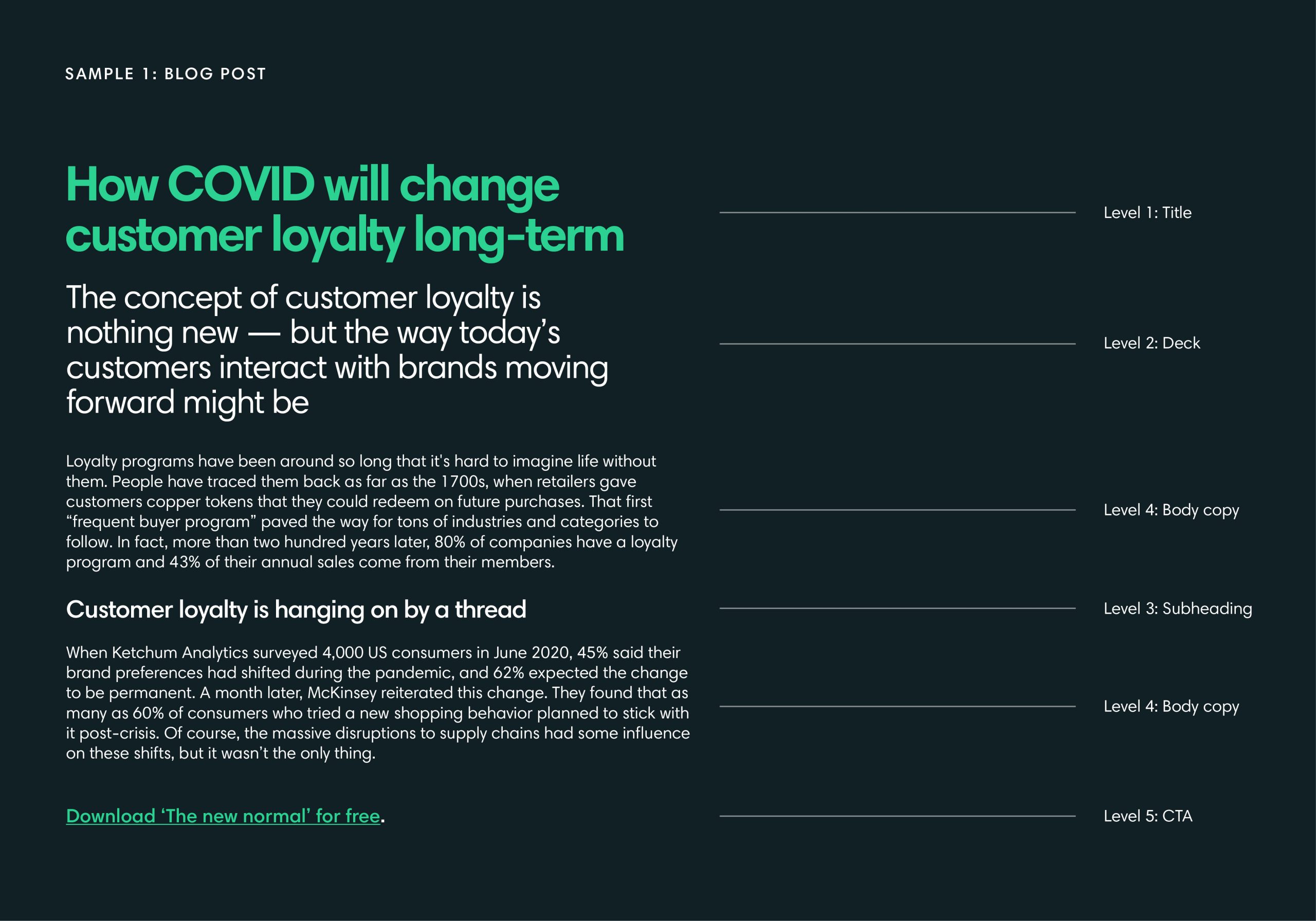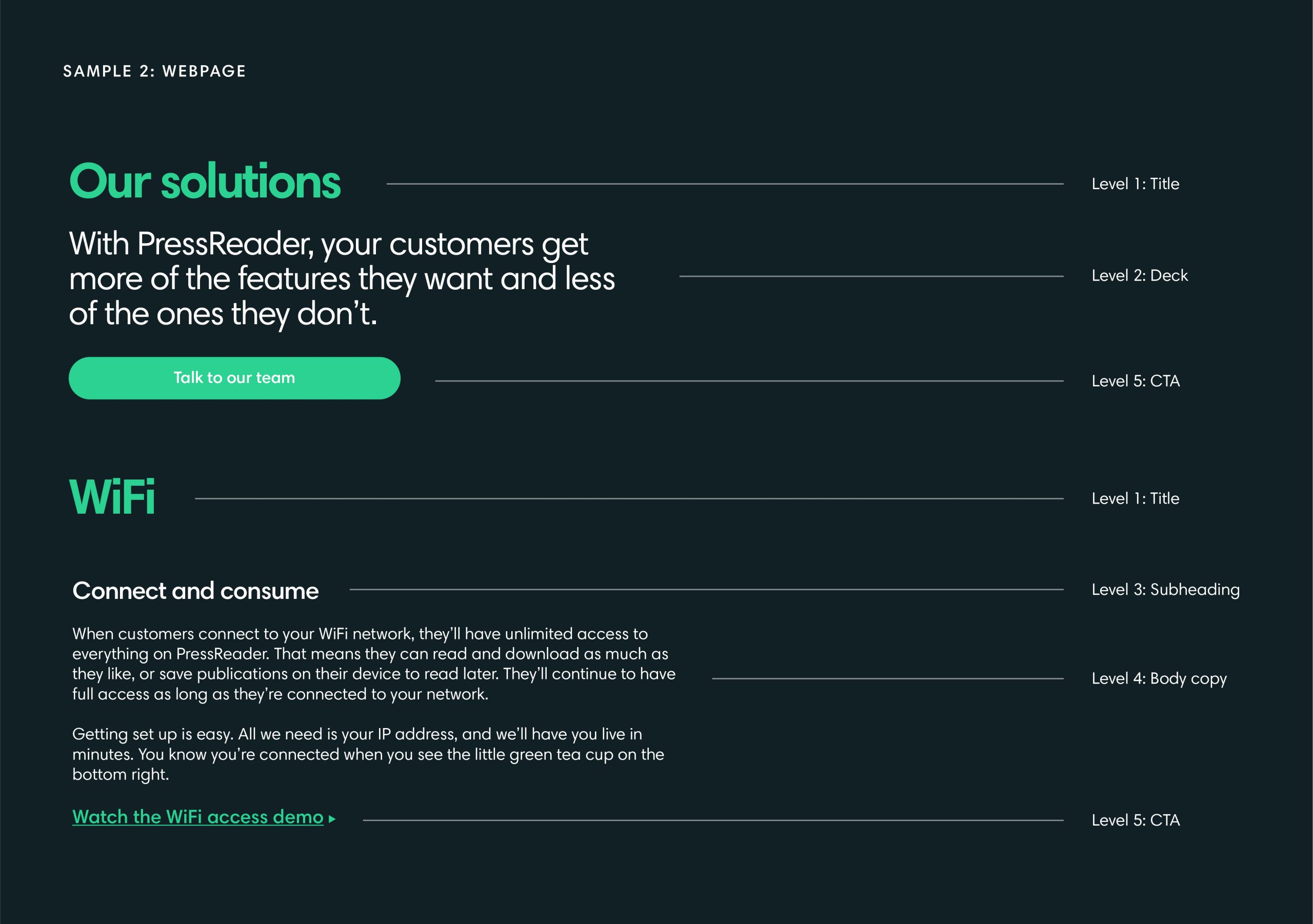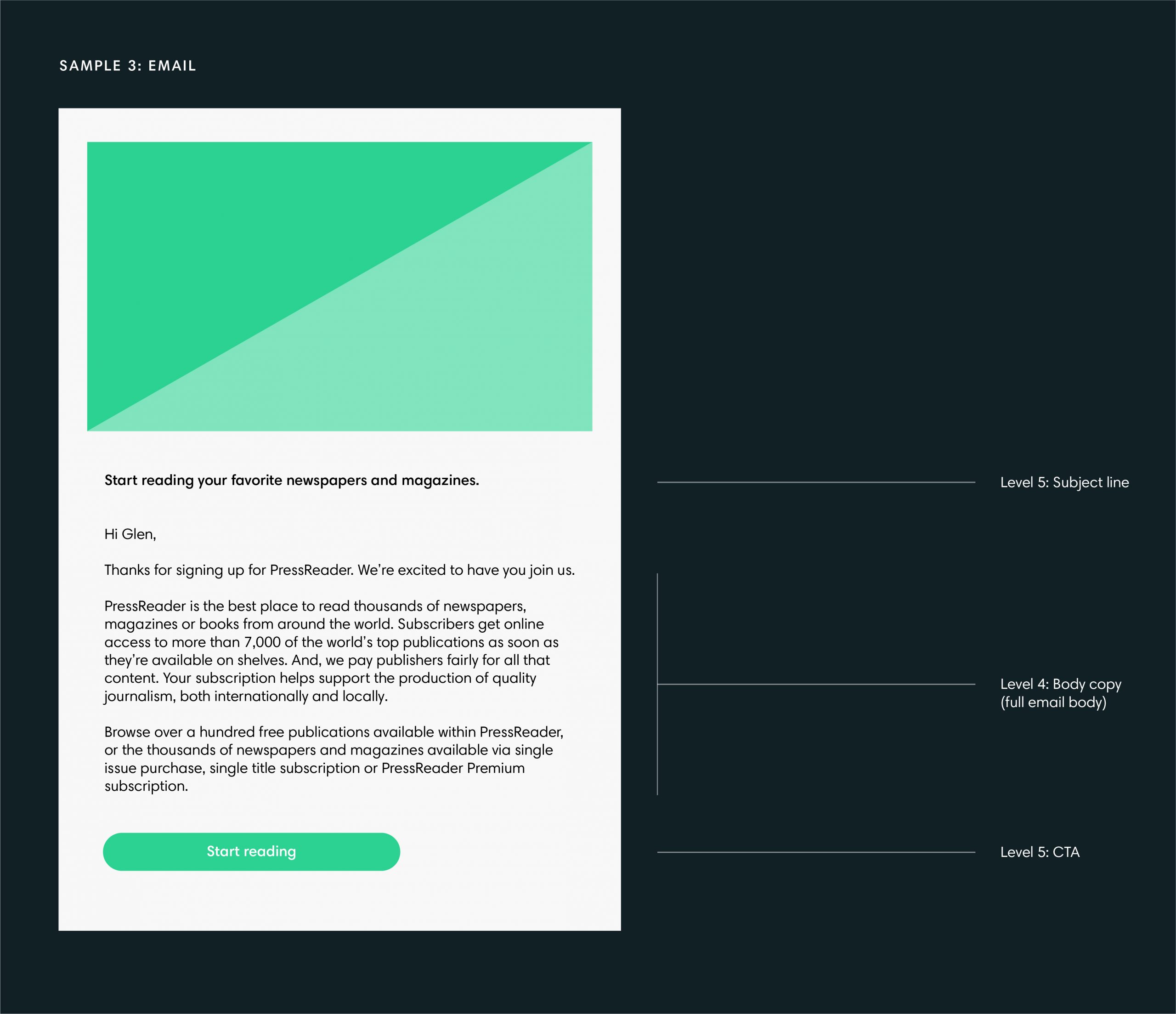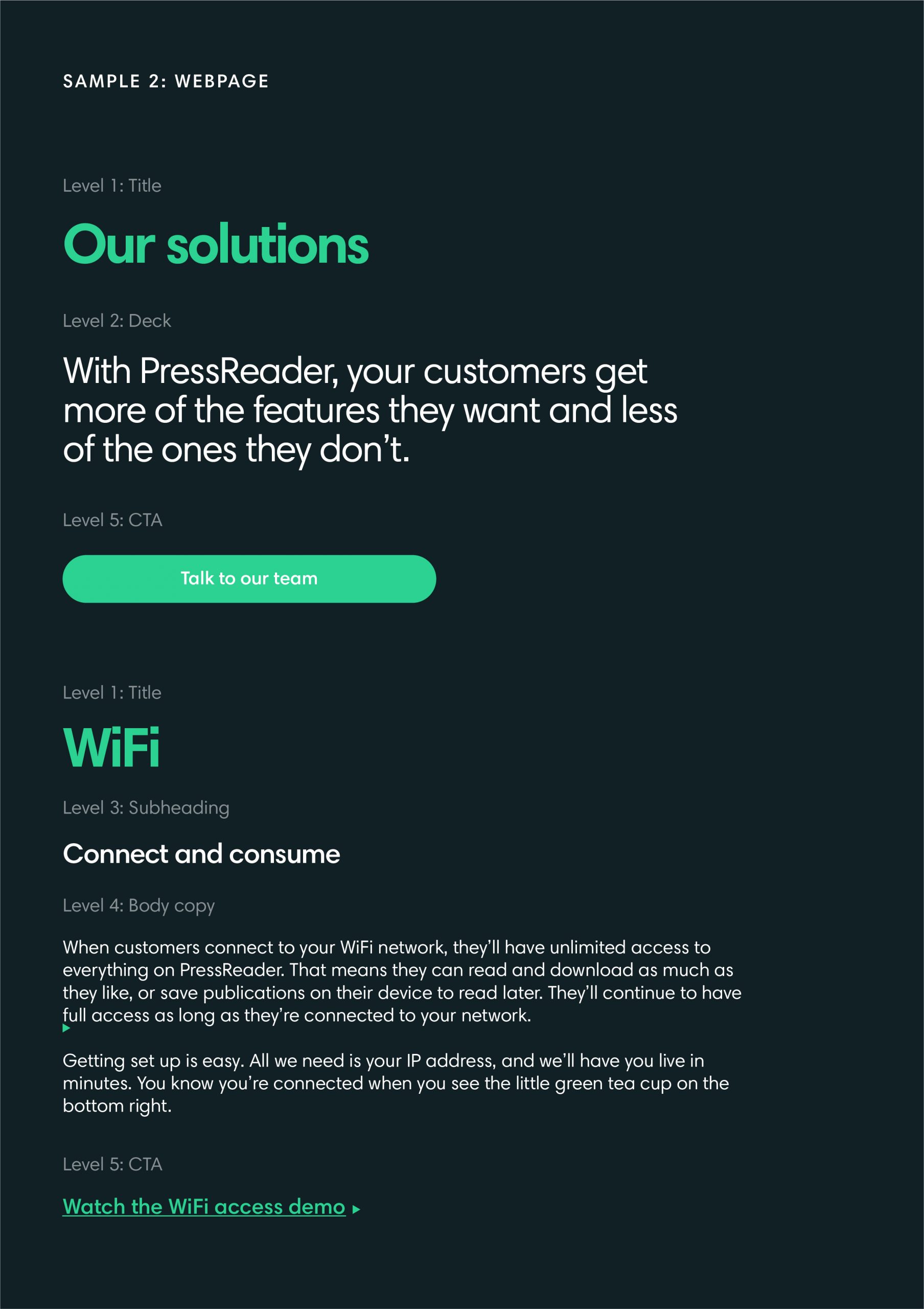Voice
Bringing voice to life
Voice is the way we sound when we communicate.
Narrative positioning
We personify our brand as the team working behind the scenes. Together, we are PressReader.
This means we always write in the first person plural and use “we” instead of “I”. We want to show our customers, partners and publishers that PressReader is the sum of our team — and it doesn’t exist without us.
How we talk
It’s important that we have one, consistent voice — but it’s boring if we never fluctuate. Humans express highs and lows when they speak, and we want to achieve the same natural flows in our voice. Here’s how that comes to life across an asset:
Level 1: Titles and product names
Clear, helpful, searchable
For titles and product or feature names, we focus on what will make most sense to our target audiences. We think creatively about how we can avoid literal naming conventions or overused titles that don’t set us apart, but we prioritize being clear above all else. Especially, when writing a title for a digital asset that benefits from SEO, like a blog post, we want to ensure we aren’t sacrificing searchability for creativity.
Level 2: Ledes and decks
Clear, editorialized, engaging
The supporting copy we occasionally include beneath a title or a headline is meant to bridge readers from our titles into the purpose of the given asset. It should provide a clear hook of what’s to come, but can be a bit more creative and clever than our titles to continue building interest.
Level 3: Subheadings
Creative, evocative, clever
Subheadings are among the best places for us to show we are creative. We use metaphors, paint a picture and incorporate plays on words to put a smile on our readers’ faces and draw them in to consume more.
Level 4: Body copy
Conversational, friendly, confident
Body copy makes up the majority of words on a page, so that’s where we really want our calm and approachable voice to come through. We keep sentences clear and concise, show humble confidence in our claims and communicate as equals with whoever we are addressing — never top-down and never self-deprecatingly.
Our body copy really forms the basis of a conversation with our various audiences. It should be casual, friendly and warm.
Level 5: Calls-to-action and subject lines
Direct, compelling, inviting
Our subject lines in emails and our CTAs across assets are designed to drive a specific next step, so we want to keep them simple. We never want to sound pushy or salesy, but these short snippets should feature the most direct language we use. We are confident that readers will want to follow our cue.
Voice hierarchy
Below are some examples across format types of how these five levels come together to bring the PressReader voice to life.
Rules to live by: A checklist for a clear, creative, calm, confident voice
Be clear
-
-
- Limit yourself to one complex or technical word per sentence — and try to avoid them altogether.
- If a sentence is especially long, or includes a secondary clause like this, follow it with a short sentence to add balance and give readers room to breathe. It helps.
- If you find yourself using more than two commas in a single sentence, it’s probably a good sign to split it into two.
-
Be creative
-
-
- Ask yourself if there’s an analogy, metaphor or anecdote that would help your asset come to life — but keep it to one per asset.
- Try to limit the number of adverbs (‘ly’ words) you use. Chances are you don’t need them.
-
Be calm
-
-
- Ctrl + F for exclamation marks and ask yourself if you could do without. If an exclamation mark still seems like the right choice, limit yourself to one per asset.
- Do the same for question marks and ask yourself whether posing those questions seems calm and confident or anxious and concerned. Consider whether you could flip the sentence structure to make a reassuring statement instead.
-
Be confident
-
-
- Use an active > passive voice. Check that your subjects are doing an action, and avoid having the action be done to them.
Maxwell downloaded PressReader. ✅
PressReader was downloaded by Maxwell.❌ - Carefully revisit every statement — especially stats and claims about PressReader — to make sure they sound factual, mature and grounded. Take the approach of a friend sharing something interesting, not a teacher training a student on a new idea.
- Use an active > passive voice. Check that your subjects are doing an action, and avoid having the action be done to them.
-









